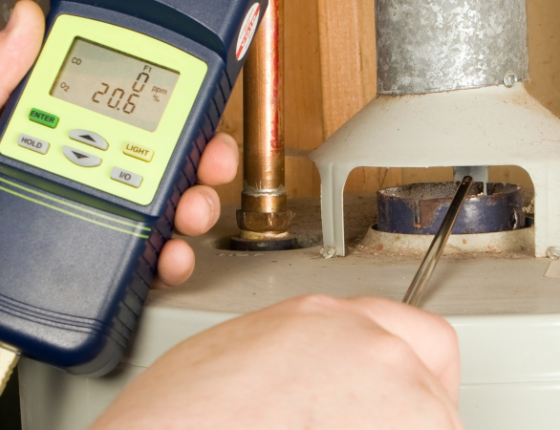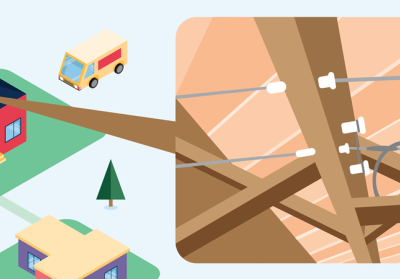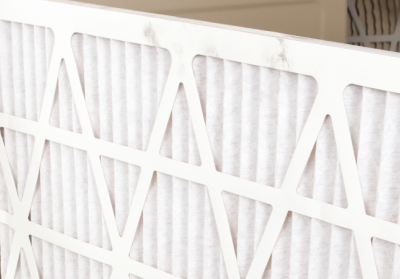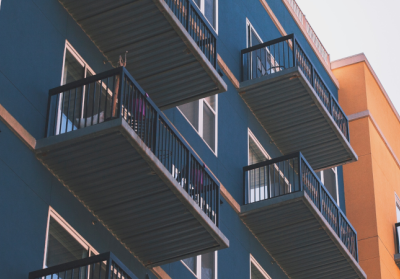Appliance Gas Spillage
Appliance gas spillage happens when appliances spill harmful gasses into your home. Causes of spillage can be confusing, so we break it down.
Our home energy audit customers are often surprised to learn that energy efficiency and health and safety are connected. This is especially true if you have a natural draft or atmospherically vented water heater or heating system.
Most of the time, a naturally drafting system is not energy efficient, and it risks the health and safety of your home through a process called “combustion gas spillage,” or “spillage".
The causes of spillage can be confusing, so we’ve broken it down below.
The bottom line is that spillage is problematic, and it can even be dangerous, so you should take the proper steps to stop it in your home. The good news is that solving a spillage issue will not only keep your family safe but often also makes your equipment more energy efficient.
Watch the video below for a visual explanation of appliance gas spillage and heating system safety.
What does “spillage” mean?
Furnaces, boilers, and water heaters burn natural gas in order to produce heat. When the equipment in your home burns natural gas, it leaves behind waste such as carbon monoxide. Ideally, the waste leaves your home via a vent or flue that sits just above the appliance and leads outside (often through your chimney). When 100 percent of the waste leaves your home, there is no spillage. Spillage only occurs when some or all of that waste is unable to escape to the outside.
Natural draft or atmospherically vented equipment has a harder time removing 100 percent of the gas waste because it relies only on hot gases’ buoyancy for them to travel up the vent and out of the home. This equipment will always run the risk of spilling because the gases are not completely sealed from your living space, and there is no fan or motor forcing these gases out the flue to the outside.
When waste is unable to escape properly, the waste gas can spill back down the vent and into your living space via the gap between the vent and the appliance. This gap is present on all natural draft or atmospherically vented appliances.
Unfortunately, there are many circumstances that can prevent this waste gas from escaping and allow it to spill into your home. The waste gas contains harmful pollutants like carbon monoxide, which, if it spills into your home, lowers air quality and can even cause health problems.
CEE strongly recommends that you take the proper steps to stop any combustion gas spillage in your home. Waste spillage can get worse as your appliance ages. Don’t risk your health and safety.
If you have any spillage concerns in your home, address them before you take on any additional updates to the home, especially air sealing and insulation. Air sealing and insulating a home with spillage issues is dangerous and is likely to worsen the spillage effects.
Who can help me determine if my natural draft equipment spills?
If you are concerned that your natural draft water heater or heating system may be spilling into your home, a trained professional can help.
Minnesota Xcel Energy and CenterPoint Energy customers can have their equipment tested during an energy audit by a certified energy auditor.
If you have other utility providers, they may offer similar services. If no audit is available to you or if you have a safety issue and need to replace your equipment immediately, work with a heating or plumbing contractor to install sealed and power-vented equipment.
The solution: Upgrade your appliances
The best way to stop spillage is to upgrade your appliances.
One option is to upgrade to a sealed combustion heating system and a power-vented water heater (PVWH). With sealed combustion and power venting, the gas waste is completely sealed off from your living space, so there is no way for spillage to occur. Some units also have a motor or fan that forces the waste outside through the vent or flue.
Another option could be to upgrade to a heat pump water heater (HPWH), sometimes called a hybrid water heater. These options are fully electric, reducing the use of natural gas in the home and associated spillage concerns.
For heating, high-efficiency heating options exist that use all gas, all electricity, or a mixture of both, depending on the needs of the home. One of those options is the air source heat pump (ASHP), which moves heat from location to location and acts as both a heater and an air conditioner. For more information on the heating upgrades available to homeowners, contact an energy advisor below.
What will it cost to upgrade my water heater and heating system?
Generally, installation of most power-vented water heaters costs about $5,000. High-efficiency and sealed combustion furnaces often range from $6,500 to $7,500, and high-efficiency boilers cost between $11,000 and $12,500.
If you live in Minnesota and have natural draft equipment that is spilling waste into your home, CEE’s Lending Center can help you finance these replacement projects with our nonprofit lending options.
Many utilities also offer rebates for high-efficiency water heaters, furnaces, and boilers. Always check to see if your project is rebate-eligible.
What causes natural draft equipment to spill?
Spillage is possible with all natural draft equipment. However, under certain conditions, spillage is more likely. If your equipment is spilling, find out what is causing the spillage and work with trained professionals to correct it. The following conditions often cause spillage:
- Problems with slope. A water heater vent needs to have the proper rise in order for gravity to force the waste product outside. A vent should have a minimum upward slope of 1/4" rise per foot of run. It should never sag or dip. Vents with long horizontal sections should also be avoided. A heating contractor may be able to fix the problem by replacing your vent; however, the best option is to still upgrade to a power-vented or sealed combustion system.
- Orphaned vent. If you upgraded an old furnace to a high-efficiency model that now vents out the side of the house, you likely left your naturally drafting water heater vent orphaned in the chimney it used to share with the old furnace vent. By itself, it may no longer be able to draft the waste from the water heater. If this is the problem, make plans to upgrade your water heater to a power-vented model.
- Other exhaust equipment. A naturally drafting water heater or heating system relies solely on the buoyancy of hot gas to rise and remove the waste up and out the flue. Often, this cannot compete with other stronger exhaust systems like a kitchen range hood, bath fan, or clothes dryer, which have powerful fans and motors that work to remove food smells, smoky air, and moisture from your home. When one or more of these fans or motors are running, they can force your water heater to spill into your home by pulling gases back down the flue. If either the furnace or water heater spills in this scenario, it is important to upgrade the equipment. Until it is replaced, avoid running multiple exhaust equipment fans at once.
Depending on your home and your concerns, you may want to consider investing in a low-level carbon monoxide monitor, which can detect lower levels of carbon monoxide than standard monitors. They also typically display the amount of carbon monoxide in the space, so you can monitor changes based on your use of the home, the ventilation you have on, and more. This is also a good option for anyone whose bedroom is near their naturally drafting appliances.
You can read more about these and other conditions on this Structure Tech Blog Post. Note that in this blog, they have used the alternate term “backdrafting” to describe spillage.
I have natural draft equipment, should I upgrade my appliances?
If your energy auditor recommends that you switch to sealed combustion appliances or informs you of any safety issues with your current system, you should make the change in the interest of your home’s safety.
Also, if you insulate or air seal your home, upgrade to sealed and power-vented models as a part of this work. While insulation may seem unrelated to water heaters and heating systems, it makes your home tighter, which increases the likelihood of problems due to spillage, since gas waste would be trapped inside.
Lastly, if your natural draft equipment is not spilling, you should upgrade to sealed combustion versions when you replace the equipment due to age or failure. CEE recommends replacing water heaters after 10 to 12 years, furnaces after 20 years, and boilers after 25 years.
If have any questions about combustion gas spillage, remember that CEE’s free Energy Advisor Service is here to bring clarity to your project. Contact them at 612-244-2484 or through the Ask Us button below.
Outside Resources
| Minnesota Department of Health Carbon Monoxide (CO) Poisoning in Your Home This resource shares information about the dangers of CO poisoning and how to protect yourself and your family. | Minnesota Department Of Commerce Home Energy Guide More details on how energy is used in your home, including solving spillage issues. |
| Water Heater Backdrafting, Part 1 of 2 Why it matters and what to look for from the Structure Tech blog. | Water Heater Backdrafting, Part 2 of 2 Why it’s happening and how to fix it, from the Structure Tech blog. |

Questions about your home energy? Let's talk!



